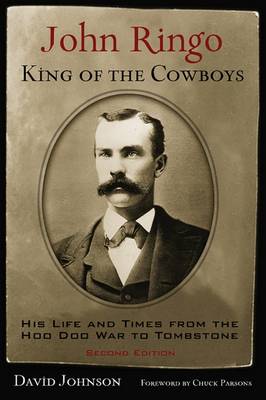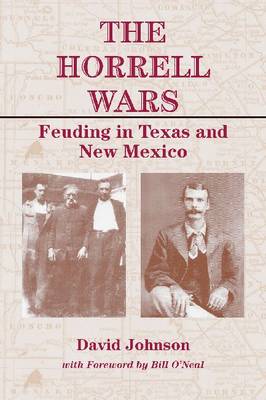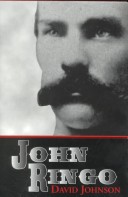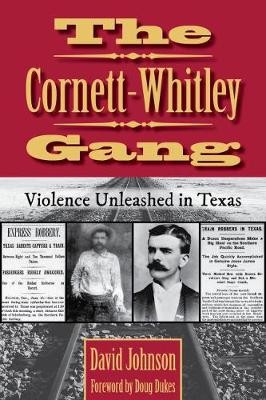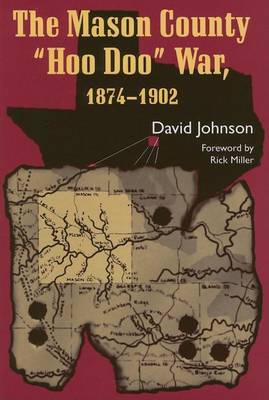A.C. Greene
5 total works
Few names in the lore of western gunmen are as recognizable. Few lives of the most notorious are as little known. Romanticized and made legendary, John Ringo fought and killed for what he believed was right. As a teenager, Ringo was rushed into sudden adulthood when his father was killed tragically in the midst of the family's overland trek to California. As a young man he became embroiled in the blood feud turbulence of post-Reconstruction Texas.
The Mason County "Hoo Doo" War in Texas began as a war over range rights, but it swiftly deteriorated into blood vengeance and spiraled out of control as the body count rose. In this charnel house Ringo gained a reputation as a dangerous gunfighter and man killer. He was proclaimed throughout the state as a daring leader, a desperate man, and a champion of the feud. Following incarceration for his role in the feud, Ringo was elected as a lawman in Mason County, the epicenter of the feud's origin.
The reputation he earned in Texas, further inflated by his willingness to shoot it out with Victorio's raiders during a deadly confrontation in New Mexico, preceded him to Tombstone in territorial Arizona. Ringo became immersed in the area's partisan politics and factionalized violence. A champion of the largely Democratic ranchers, Ringo would become known as a leader of one of these elements, the Cowboys. He ran at bloody, tragic odds with the Earp brothers and Doc Holliday, finally being part of the posse that hounded these fugitives from Arizona. In the end, Ringo died mysteriously in the Arizona desert, his death welcomed by some, mourned by others, wrongly claimed by a few. Initially published in 1996, John Ringo has been updated to a second edition with much new information researched and uncovered by David Johnson and other Ringo researchers.
The Mason County "Hoo Doo" War in Texas began as a war over range rights, but it swiftly deteriorated into blood vengeance and spiraled out of control as the body count rose. In this charnel house Ringo gained a reputation as a dangerous gunfighter and man killer. He was proclaimed throughout the state as a daring leader, a desperate man, and a champion of the feud. Following incarceration for his role in the feud, Ringo was elected as a lawman in Mason County, the epicenter of the feud's origin.
The reputation he earned in Texas, further inflated by his willingness to shoot it out with Victorio's raiders during a deadly confrontation in New Mexico, preceded him to Tombstone in territorial Arizona. Ringo became immersed in the area's partisan politics and factionalized violence. A champion of the largely Democratic ranchers, Ringo would become known as a leader of one of these elements, the Cowboys. He ran at bloody, tragic odds with the Earp brothers and Doc Holliday, finally being part of the posse that hounded these fugitives from Arizona. In the end, Ringo died mysteriously in the Arizona desert, his death welcomed by some, mourned by others, wrongly claimed by a few. Initially published in 1996, John Ringo has been updated to a second edition with much new information researched and uncovered by David Johnson and other Ringo researchers.
For decades the Horrell brothers of Lampasas, Texas, have been portrayed as ruthless killers and outlaws, but author David Johnson paints a different picture of these controversial men. The Horrells were ranchers, but some thought that they built their herds by rustling. Their initial confrontation with the State Police at Lampasas in 1873 marked the most disastrous shootout in Reconstruction history. The brothers and loyal friends then fled to New Mexico, where they became entangled in what would later evolve into the violent Lincoln County War. The brothers returned to Texas, where in time they became involved in the Horrell-Higgins War. The family was nearly wiped out following the feud when two of the brothers were killed by a mob. Only one member of the family, Sam, Jr., lived to old age and died of natural causes.
During the late 1880s, the Cornett-Whitley gang rose on the Texas scene with a daring train robbery at McNeil Station, only miles from the capital of Texas. In the frenzy that followed the robbery, the media castigated both lawmen and government officials, at times lauded the outlaws, and indulged in trial by media. At Flatonia the gang tortured the passengers and indulged in an orgy of violence that earned them international recognition and infamy.
The damage that the gang caused is incalculable, including the destruction, temporarily, of a Texas Ranger company. The gang tarnished reputations, shed light on what news media was becoming, and claimed lives. As a whole the gang was psychopathic, sadistic, and murderous, prone to violence. They had no loyalty to one another and no redeeming qualities.
But the legacy of the gang is not all evil. Private enterprises, such as Wells Fargo, the railroads, and numerous banks, joined forces with law enforcement to combat them. Lawmen from cities and counties joined forces with federal marshals and the Texas Rangers to further cement what would become the "brotherhood of the badge." These efforts succeeded in tracking down and killing or capturing a good number of the gang members.
Readers of the Old West and true crime stories will appreciate this sordid tale of outlawry and the lawmen who put a stop to it. Those who study the media and "fake news" will appreciate the parallels from the 1880s to today.
The damage that the gang caused is incalculable, including the destruction, temporarily, of a Texas Ranger company. The gang tarnished reputations, shed light on what news media was becoming, and claimed lives. As a whole the gang was psychopathic, sadistic, and murderous, prone to violence. They had no loyalty to one another and no redeeming qualities.
But the legacy of the gang is not all evil. Private enterprises, such as Wells Fargo, the railroads, and numerous banks, joined forces with law enforcement to combat them. Lawmen from cities and counties joined forces with federal marshals and the Texas Rangers to further cement what would become the "brotherhood of the badge." These efforts succeeded in tracking down and killing or capturing a good number of the gang members.
Readers of the Old West and true crime stories will appreciate this sordid tale of outlawry and the lawmen who put a stop to it. Those who study the media and "fake news" will appreciate the parallels from the 1880s to today.
Mason County "Hoo Doo" War, 1874-1902, The. A.C. Greene Series.
by David Johnson
Published 1 January 2006
